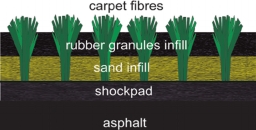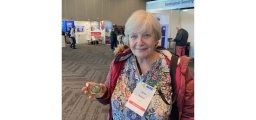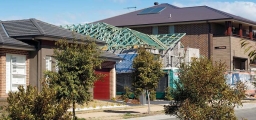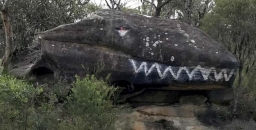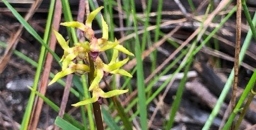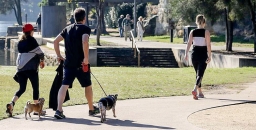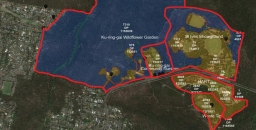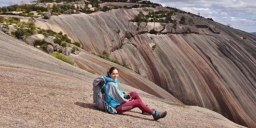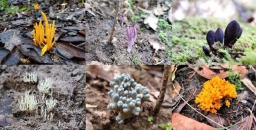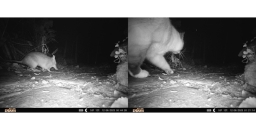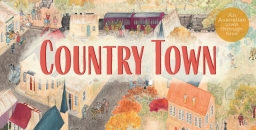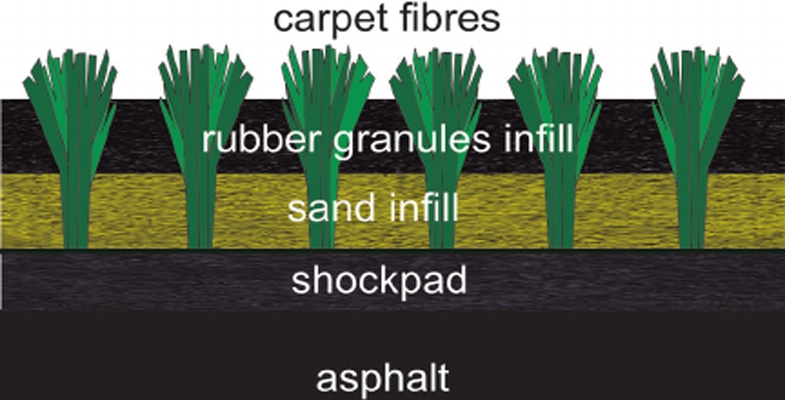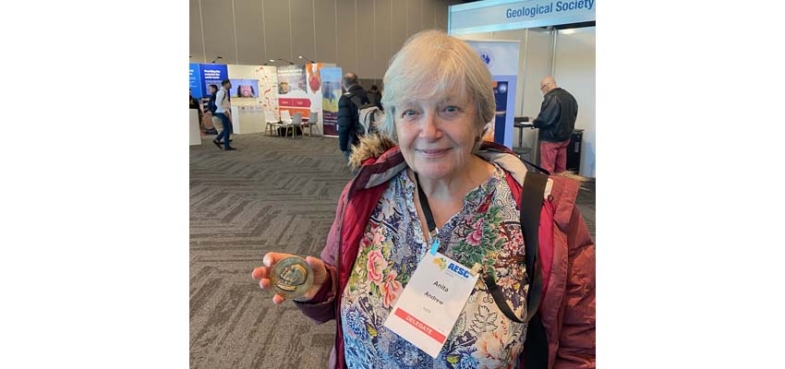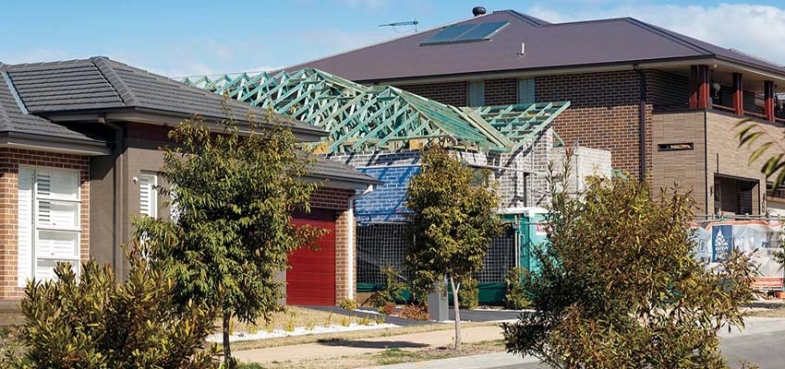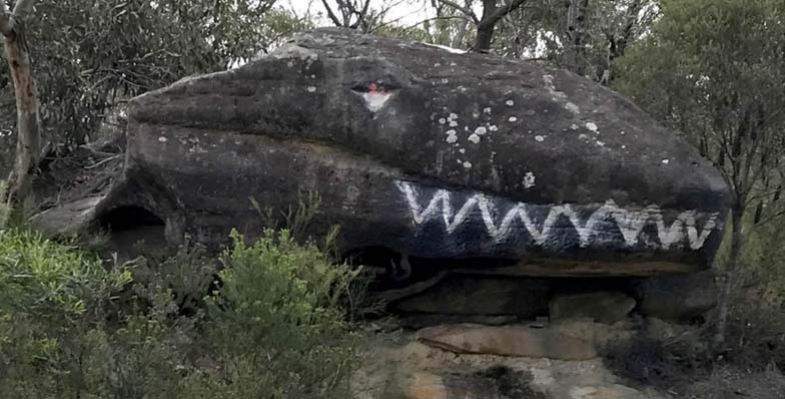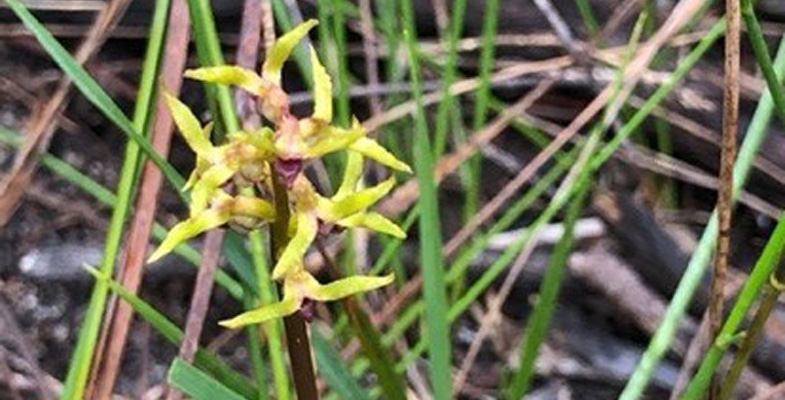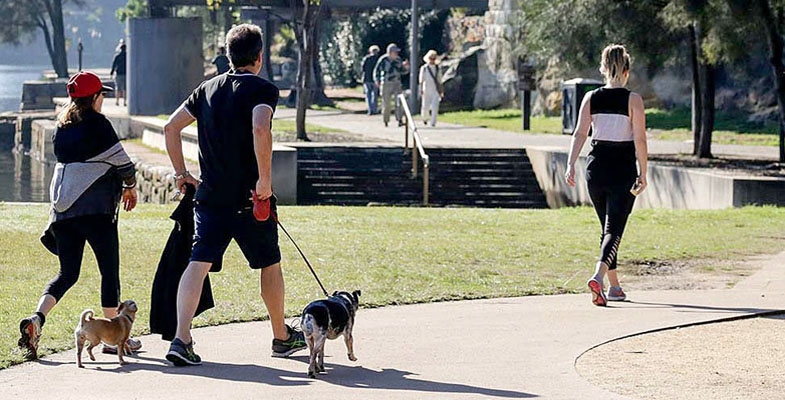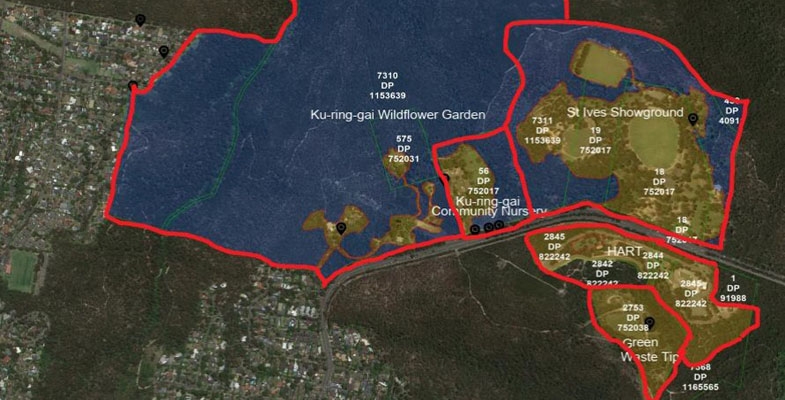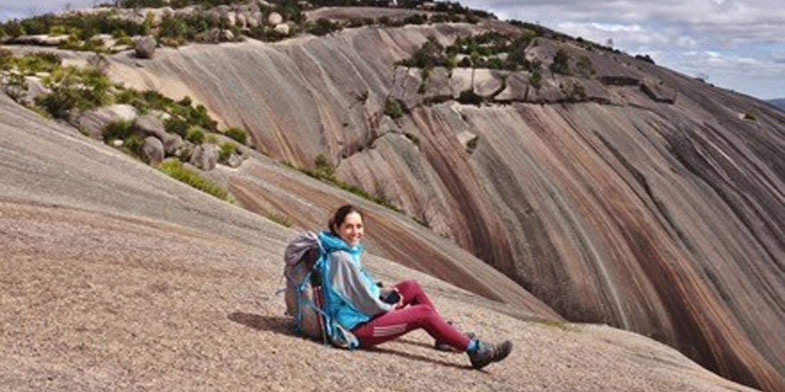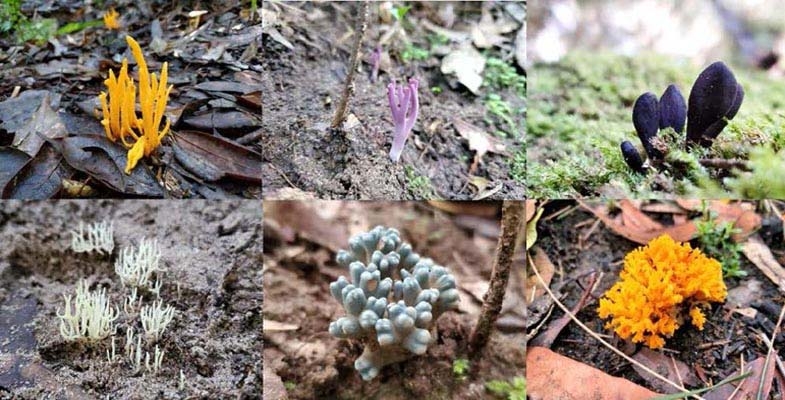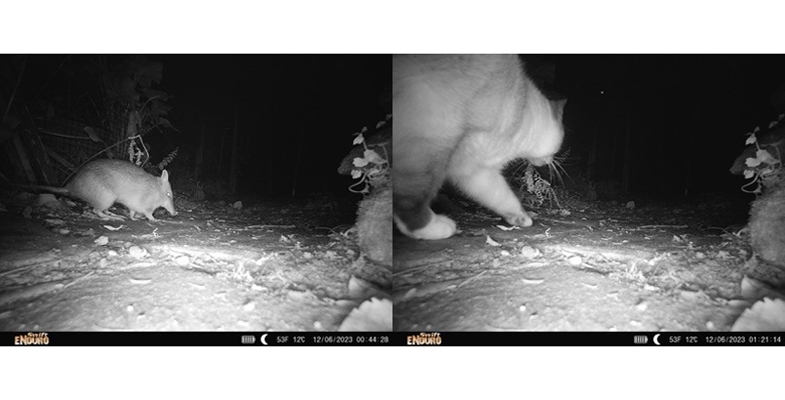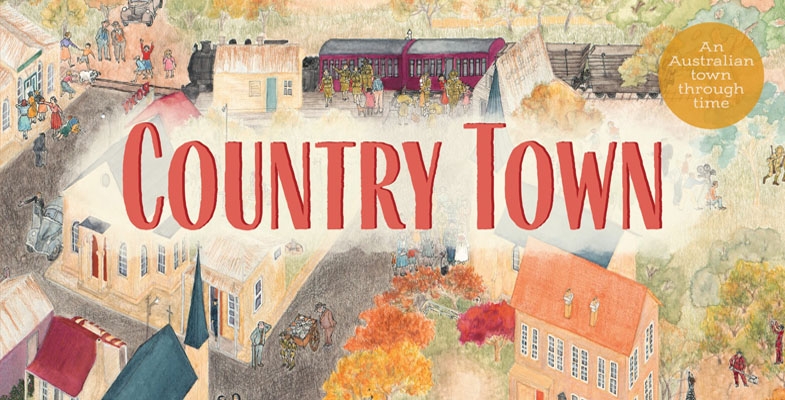STEP Matters 221
- Default
- Title
- Date
- Random
- The Chief Scientist’s report, Synthetic Turf Study in Public Open Spaces has finally been released but fails to give definitive…Read More
- We congratulate former STEP treasurer and councillor on Ku-ring-gai Council, Anita Andrew, on receiving the W.R. Browne Award for 2023.…Read More
- High net immigration is putting huge pressure on governments to get more housing built. But do we need to do…Read More
- There has been a lot of publicity about the proposed development of an area of land known as Lizard Rock.…Read More
- The local orchid Genoplesium baueri (endangered), also known as Bauer’s Midge Orchid, was added to the IUCN Red List of…Read More
- Ku-ring-gai Council has recently completed a recreation needs study. The June meeting agreed to put the study out for public…Read More
- Ku-ring-gai Council is developing a masterplan for the St Ives Showground and Precinct that will guide future improvements and define…Read More
- We are pleased to announce that the recipient of this years’ award is Margarita Gil-Fernández for her project entitled Mycorrhizal…Read More
- We have decided to expand our commitment to environmental education, and this year we have awarded our first ad hoc…Read More
- Have you ever wondered about all the little creatures that may visit your garden at night? A wildlife camera has…Read More
- STEP families may be interested in Country Town, a children’s picture book that will be coming out soon. Isolde Martyn…Read More
Chief Scientist’s report finally released – there should be a moratorium on new synthetic fields
The Chief Scientist’s report, Synthetic Turf Study in Public Open Spaces has finally been released but fails to give definitive guidance.
Main conclusion is wrong – we cannot treat synthetic turf as an experiment!
The report developed a set of recommendations that it states will (p vii):
allow NSW to adopt an accelerated ‘learn and adapt’ approach to the use of synthetic turf under NSW conditions … If applied, they will allow NSW to set the scene over the next decade, using new fields as a testbed to contribute to innovation and data-driven decisions.
This statement is totally at odds with the precautionary principle. New synthetic fields should not be approved if the major issues cannot be addressed.
The Natural Turf Alliance is calling for the NSW government to put a stop to all plans for synthetic turf on playing fields until there is sufficient information to enable more evidence-based decision making processes. It is only right to take a precautionary approach to ensure that there are no regrettable long-term impacts on human health and the environment. Also, many of the highlighted issues could have significant financial consequences.
In the meantime, there is an urgent need to upgrade some playing fields, and natural turf can be used. Councils are already managing hundreds of natural grass fields. There are ways of doing a better job of upgrading and maintaining these fields. The report acknowledges this but then says nothing more.
Background
There has been considerable community concern about the installation of synthetic turf on playing fields, particularly in environmentally sensitive locations, and bad experiences with the planning process. Following a public enquiry in early 2021 that amplified these issues, in November 2021, Rob Stokes (then) Minister for Planning and Public Spaces, asked the NSW Chief Scientist and Engineer to provide an independent review into the design, use and impacts of synthetic turf in public open spaces.
It was promised in mid-2022. It took the Greens to issue a standing order in the Legislative Council for it to be finally released on 9 June 2023. The report was dated 13 October 2022. Who was trying to hide the results? Was it the Minister for Planning, Anthony Roberts whose desk it was sitting on? The excuse given was it that was ‘cabinet-in-confidence’ and consultation was taking place with councils and sporting bodies about the guidelines that should be issued for synthetic turf installations. In the meantime lots of decisions are being made without this information.
What the report says about natural turf
The first item of the terms of reference is:
- Identify, describe and provide advice on:
(a) key scientific and technical issues associated with the use of synthetic turf compared with grass surfaces in public spaces
The report states (p v.):
Best practice guidelines for improving the performance of natural turf have been developed in NSW. If applied to installation and ongoing management of natural turf sporting fields, these practices may allow increased performance of natural turf fields to meet demand.
In the more detailed discussion of the recommendations, in reference to an example of the guidelines developed for the Lower Hunter, the report states that analysis in the guidelines reported:
that when lifecycle costs and carrying capacity were considered, natural turf fields built to best practice were more cost effective than alternative options including synthetic turf.
Nowhere in the report is there a comparison of the scientific and technical issues that apply to the use of natural grass and synthetic turf. It is frustrating that there is no discussion about making a choice between the two. They are treated as separate entities.
Natural turf is already proven to be a better option
At the community forum organised by the Natural Turf Alliance on 23 June the speakers demonstrated that natural turf will be successful in terms of available playing hours if the correct soil preparation and drainage system is applied. Councils just have to improve their practices.
Demand for synthetic turf
According to the report, which is at least a year out of date, there are currently about 181 synthetic turf fields in NSW in public and private (eg schools) spaces. This compares with about 30 in 2018. The support for these installations has been driven by the soccer associations that are arguing that available playing hours are too restricted on grass fields to meet demand. This has been the case in the past couple of years that were abnormally wet.
Demand is increasing with population growth and it is argued by the soccer associations that the game is becoming more popular as women are taking up the game.
There are other arguments about several issues such as relative life cycle cost and water use that still being debated.
The concerns about use of synthetic turf
The report describes many issues with the use of synthetic turf and many where more research is required.
Chemical composition
Many synthetic sports fields in NSW feature long synthetic blades supported by infill, the most commonly used infill is styrene butadiene rubber crumb sourced from recycled tyres. The crumb is imported and there is a lack of information about potential contaminants such as heavy metals and polycyclic aromatic hydrocarbons. Currently, there is insufficient information and a lack of standards about the materials and chemical composition of synthetic turf. Other types of infill such as cork, are being used in newer fields but the review does not provide detail about these.
Longevity of synthetic fields
Overall, it is not clear how Australian climatic conditions will affect expectations about the longevity and carrying capacity of synthetic fields compared with overseas experience that is the basis of current decision making about installation and cost-benefit considerations.
Sustainability
Practices and standards for recycling and disposal are changing locally and overseas. Australia banned the export of waste tyres including tyre crumb from January 2022 so this component of synthetic turf has to be recycled locally or sent to landfill. The process of separating turf into components that are reusable is highly complex. Plans for a recycling facility near Albury have not yet been established.
Health
Heat impacts are a priority area for research. The commissioned reports and literature review did not identify major health risks associated with the use of synthetic turf, although it was noted that significant knowledge gaps remain and research should prioritise the potential health impacts of chemicals such as polycyclic aromatic hydrocarbons and some heavy metals. The health impacts of the high heat levels of synthetic turf are not discussed in detail but the closure of fields in hot weather is canvassed especially for younger children.
The report notes that per- and poly-fluoroalkyl compounds have been found in low concentrations in the turf blades and base carpet. They create a risk of cumulative harm to aquatic and soil life, the environment and ultimately human health.
Social and wellbeing effects
Important considerations for planners and councils will vary with each site and include reduction in community access, odours from synthetic materials and increased artificial light.
Environment
Many potential impacts are raised that need to be mitigated. Microplastics and infill have entered waterways. Design guidelines are now in force to control leakage but their success still needs to be monitored. Older fields have been observed to lose a lot of rubber crumb especially as they age. The impact of escaping infill and turf fibre (microplastics) on local soil and ecology needs to be researched.
Fragmentation of animal habitat and disruption of ecological functions will occur through the loss of natural grass, increase in heat and additional light at night. The report states that synthetic turf is unsuitable for locations with flood and bushfire risk or in sensitive ecological locations.
Recommendations
Community groups concerned about the increasing use of synthetic turf have highlighted several issues. Many of these are the subject of recommendations in the report.
1. Planning approval process
In most cases a development approval process is not required from the local council. The assessment required is a Review of Environmental Factors (REF) subject to requirements defined in the Environmental Planning and Assessment Regulations.
The report looked at a sample of REFs and found many gaps in coverage of these requirements, for example:
- climate change impacts on surface heat and stormwater
- impact of impermeable surface on soil health
- waste disposal at the end of life of the turf
- micro and nano-plastic contamination
- impact of increased light and heat on fauna outside the footprint of the field
The approval process does not provide clear requirements for community consultation. The report highlights this gap in the process:
Early community engagement that continues through the planning period enables discussion and representation of all stakeholders.
Consultation was sadly lacking in the case of Norman Griffiths.
2. Mitigating environmental risk
A plan is needed for the development of appropriate standards for best practice installation and use, consistency with net zero targets and end-of-life solutions via industry engagement with government and researchers.
In addition, fields in proximity to sensitive ecosystems should be independently assessed to assist with management of identified environmental issues. Risk assessments should be undertaken so that synthetic fields are not approved in areas of high environmental risk including bushfire prone areas or those with higher likelihood of flooding.
3. Future data and research
The report recognises that the scale of public investment in sporting infrastructure requires a more systematic and data-driven approach to decision-making. There is a vast amount of existing information from different sources about the design, management and performance of sporting fields, but these are not readily available or collated. A more accessible and reliable source of verified information is required.
Data collection should be complemented by the research program to address key knowledge gaps in human health and environmental impacts. A key research priority is understanding the characteristics and composition, including the chemical composition, of materials used in synthetic turf and associated layers.
Anita Andrew – award from Geological Society
We congratulate former STEP treasurer and councillor on Ku-ring-gai Council, Anita Andrew, on receiving the W.R. Browne Award for 2023. This award is presented to a person for distinguished contributions and demonstrated impact to the Earth sciences in Australia.
Anita has been joint editor-in-chief of the Australian Journal of Earth Sciences, the official journal of the Geological Society of Australia, for 13 years, and has been instrumental in maintaining the high standard of this international publication.
The medal honours the life and work of geologist William Rowan Browne, 1884–1975 who was a field geologist with a love of the high country and its glaciated terrain. He was a major supporter of the need to conserve Kosciuszko for all time, against much opposition.
Response to housing shortage – will it trash liveability?
High net immigration is putting huge pressure on governments to get more housing built. But do we need to do this at the expense of planning rules that are intended to create housing areas where people might actually enjoy living?
The new NSW government has announced that it will scrap local council and planning panel processes for developments worth more than $75m if they include at least 15% affordable housing. Developers will be able to go straight to the Department of Planning via state significant development rules so that decisions will made more quickly.
Further, these developments will also gain access to a 30% floor space ratio boost, and a height bonus of 30% above local environment plans.
Councils have been assured by the Minister for Planning (Paul Scully) that they will be consulted about the strategic merit of these proposals and council local environment plans will not be overridden.
The reforms are set to take effect later this year and are a part of the government’s commitment to construct 314,000 homes over five years.
Huge growth in population over 2022
It is not hard to see why we need so much new housing. Australia’s population grew by almost half a million during 2022 to reach 26,268,000 people at 31 December 2022. The annual growth was 496,800 people (1.9%). Annual natural increase was 109,800 and net overseas migration was 387,000.
Status of Lizard Rock development proposals
There has been a lot of publicity about the proposed development of an area of land known as Lizard Rock. The outcome could be significant development for other areas of bushland in the Northern Beaches Council area. First some background.
The Aboriginal Land Rights Act 1983 established Aboriginal land councils to manage land to provide an economic base for Aboriginal communities as compensation for historic dispossession and ongoing disadvantage. The Metropolitan Local Land Council (MLALC) owns several areas of land in the northern beaches area. Any development of this land is subject to an approval process with several stages.
Development delivery plans
In September 2019 the MLALC requested the Aboriginal Land SEPP be amended to include its land holdings in the Northern Beaches Council planning processes. This is facilitated by a Development Delivery Plan (DDP), a strategic plan that sets out the development objectives for priority land owned by local Aboriginal land councils. The DDP will help Aboriginal people develop their land to support their community and protect Aboriginal cultural heritage. It will also provide new homes and jobs for the wider community.
Nine sites (six initial sites and three future sites) were identified in the Aboriginal Land SEPP and a draft DDP. Click here for a map of the sites. These documents were exhibited by the Department of Planning for public comment prior to approval. Many submissions were made on issues including bushland and environmental impact, traffic, infrastructure, open space, bushfire and Aboriginal heritage. However these detailed issues will be considered in respect of each individual planning proposal and subsequent development application.
Lizard Rock planning proposal
Of the six sites, Lizard Rock on Morgan Road, off Forestway in Belrose was earmarked as the most suitable opportunity.

Lizard Rock site
Since October 2022 the proposal for development of this 67.7 ha site has been gone through the stages of the planning approval process, namely a planning proposal and then a gateway determination that have been reviewed by a planning panel and approved subject to various conditions.
The proposals have been opposed by politicians on all sides and the Northern Beaches Council on the grounds of the loss of pristine environment, bushfire risk, the significant congestion created and insufficient regional infrastructure. The mayor, now local MP, claims that the northern beaches already has plans to build sufficient housing in better locations
In June 2023 the planning proposal was supported at gateway determination, subject to several gateway conditions. This is for 450 low-density residential lots with 10% allocated for affordable housing. Approximately 19 ha of the site will be preserved and restored as conservation areas or public open space.
Next steps for Lizard Rock
The amended planning proposal will soon be publicly exhibited for a minimum of 30 working days to allow feedback on the proposal. Then the updated planning proposal will submitted to the department for finalisation assessment and the local environment plan and amendment will be drafted and made.
Next steps for the remaining sites
The remaining five sites require further investigation. Future land uses could include residential, industrial, employment and environmental conservation. These sites could have planning proposals or development applications submitted over the next five years.
Genoplesium baueri now on global list of endangered species
The local orchid Genoplesium baueri (endangered), also known as Bauer’s Midge Orchid, was added to the IUCN Red List of Threatened Species last year at COP 15. It is currently also listed as endangered under the NSW and federal biodiversity conservation legislation.
This classification means that it is at high risk of extinction in the near future. The inclusion in the Red List adds international significance to the classification and opens up international funding opportunities for people working to conserve these orchids.
There are some populations in the St Ives Showground precinct in the vicinity of the Wildflower Garden and nursery. This may restrict development because the plan of management mentions the possibility of road connections and increased parking between the Wildflower Garden and Showground.
Reasons for endangered classification
The NSW Scientific Committee (2012) has identified the following reasons for the endangered classification.
The main reason is the orchid’s highly restricted geographic distribution that is projected to continue to decline. The number of populations of G. baueri is uncertain. Based on records from herbaria and sightings, there are estimated to be between 20 and 30 populations between Port Stephens and Ulladulla and likely to be less than 250 individuals.
Geographic distribution is precarious for the survival of the species based on severe fragmentation of populations; continuing decline inferred and projected due to current threats of disturbance from trail bike riding, rubbish dumping and urban development; and extreme fluctuations in the number of mature individuals.
The species does not produce a new tuber at the end of each growing season but instead persists from the same tuber-like perennial root. Jones (2006) suggests that cultivation is ‘impossible’.
Plants do not regularly appear each year, despite favourable seasonal conditions. When plants do appear, they are only above ground for approximately two months before dying back to a dormant state. Whilst the appearance of plants above ground may fluctuate from year to year, individual plants may remain dormant in the soil. Nevertheless the number of plants of G. baueri is considered to be low.
Reference
Jones DL (2006) A Complete Guide to Native Orchids of Australia including the Island Territories. Reed New Holland: Sydney
Ku-ring-gai recreation needs study
Ku-ring-gai Council has recently completed a recreation needs study. The June meeting agreed to put the study out for public exhibition but it is not there yet.
The outcomes are important for putting the demands for the use of our natural areas into perspective.
Population
Ku-ring-gai’s population is growing and becoming more diverse. Current population is 124,000. Around 17,000 more people will live in the LGA by 2041 (Department of Planning population projections, 2022). In 2021, around 25% of residents live in apartments, 28% speak a language other than English at home, and families with children and young people make up 46% of households.
People want more spaces to participate in informal recreation for fun
Fun and enjoyment (90%), fitness and exercise (88%) and getting fresh air (88%) are the main reasons residents use recreation spaces. Walking (87%) is the most popular recreation activity followed by bushwalking (75%). Other popular activities include picnics (64%), relaxing (58%), walking the dog (48%), fitness activities (44%) and running (44%).
Sports are still in high demand, but non- traditional sports are emerging
Local sporting clubs and peak bodies indicated that participation in organised sport remains popular, reporting a 41% increase in participation in the past five years. There is also increasing demand for spaces for informal social team sports, emerging games such as Padel and pickleball, as well as demands for more spaces for women’s sports.
Sporting fields
A review of the facilities against benchmarks indicates that there are adequate sports fields but their quality should be improved. This is a major barrier for participation with the issues being lighting, amenities, maintenance, safety and unfit facilities for female participation.
There is an oversupply of tennis courts and a need for more basketball courts.
Analysis of council’s formal booking data shows that natural turf sports fields operate below capacity throughout the year, indicating the opportunity to improve their capacity and utilisation. However there are questions about whether the booking data is a true indication of actual usage. It can be observed that tennis courts get a lot of informal usage.
Sports fields and sports spaces can no longer be single purpose or single code to meet needs. The availability of suitable additional land is limited and expensive. This means planning for more diverse and equitable open spaces and recreation facilities that are designed for shared uses by children, older people and dog owners.
Council should undertake a study to determine which sporting codes can share effectively and how to optimise existing sports fields and sports courts to make them more multi-purpose.
In our view synthetic turf is not the answer. Upgrading existing grass fields and improving maintenance will meet the needs of existing organised sports. The study highlights the need for more flexible and multi-purpose use of these fields. This cannot occur with synthetic turf that is focussed on facilities for a single sport.
Open space and parks
There is a need for more open space especially near the railway line. Based on the benchmark of 1 ha per 1,000 people Ku-ring-gai is well below the minimum requirement of 124 ha of parks to support the current population in 2021.
Natural areas
It is acknowledged that natural areas are predominantly conserved or preserved for passive recreation. There are limited opportunities to provide recreational spaces in natural areas. There is still a need to better connect them to the public open space network, as well as expand the recreational trails, where possible. The emphasis should be on ‘where possible’. The walking trails could be improved in many ways such as signposting and better linkages but there is little opportunity for new trails and bike tracks without compromising the quality of bushland.
Draft masterplan for St Ives Showground and precinct
Ku-ring-gai Council is developing a masterplan for the St Ives Showground and Precinct that will guide future improvements and define a longer term vision for the precinct.
This follows the Plan of Management (PoM) that was finalised in October 2021. The PoM sets the overarching principles and direction for the masterplan and must be adhered to as a regulatory document. We have already reported on the fraught consultation process of development of the PoM.
As a first stage council is seeking input from the community about the masterplan with the objective of creating a plan that will:
… ensure it meets the needs of current and future users and the wider community.
Online survey and submission website
Click here to respond to a survey about the current facilities. You can also provide written comments or upload a letter. The closing date is 17 July, 5 pm.
There are several issues that STEP will be commenting on that are not included in the survey. The written submissions will contribute to the contents of the masterplan. It seems that it is difficult to influence council to change a draft plan once it has been published. This will take place in August with the final draft going before council in September 2023.
User groups such as bike riders and soccer players are likely to be commenting so it would good to hear the views of those of you who value the biodiversity of the precinct (as was demonstrated during the STEP walk led by Mark Schuster in February).
What is being surveyed?
The survey asks questions that are narrowly focussed on opinions about the facilities at the showground including suggestions for changes or improvements. There are also questions about the capacity to hold larger events for more than 300 people.
Parking and traffic movements are the most obvious issues. The showground is already highly congested on weekends given the popularity of the playground and regular events such as the markets and horse riding. The PoM states that:
The lack of formal parking and users creating informal parking areas can cause soil erosion and compaction, which impacts negatively on the environment, vegetation, and water quality.
A major part of the parking area near the entrance is actually in amongst vegetation that is classified as Duffys Forest that is endangered and should be protected. It is a dust bowl or muddy mess depending on the weather. It is only going to get worse if more facilities are going to be developed.
The PoM gave a high priority to defining parking controls and preparing a landscape plan to guide the rehabilitation of the Duffys Forest but no plan has been seen yet.
Some sort of public transport system has to be developed as well as a safer way of exiting onto Mona Vale Road especially when major events are held such as the Medieval Faire.
We are also concerned about the health of the trees that are supporting the high ropes course.
The current PoM is not actually a plan for many parts of the Showground precinct. For areas like the nursery and former Greenfields tip it is merely a set of suggestions or ideas. One concern is the plan to upgrade the link between the Wildflower Garden and the Showground. The area contains prime Duffys Forest vegetation as well as the endangered Genoplesium baueri.
John Martyn Research Grant for the Conservation of Bushland 2023
We are pleased to announce that the recipient of this years’ award is Margarita Gil-Fernández for her project entitled Mycorrhizal Fungal Diversity Associated with Small Mammals in Response to Anthropogenic Disturbance.
Margarita has provided the following description of her work.
I received my Master of Research degree from Macquarie University where I am currently completing my PhD degree. I am interested in mammal ecology, from small mammals to big carnivores, including invasive species. I have experience in research planning, experimental design and implementation, as well as data collection, management and data analysis. To date, my research projects have primarily been field-based, including projects for small mammal trapping and monitoring, camera trapping, and forest health research.
Anthropogenic (e.g. agriculture and urbanisation) and natural (e.g. wildfires and insect outbreaks) disturbances are currently increasing. One of the main strategies plants employ to cope with these stress conditions is to form mutualistic associations with mycorrhizal fungi, which enable them to better acquire water and soil nutrient resources. The distribution of mycorrhizal fungi is tightly linked to animals, with rodents and several Australian marsupial species being the key dispersers of these fungi.
Therefore, the composition of small mammal communities could influence the make-up of mycorrhizae communities and in turn the composition and resilience of vegetation communities.
We aim to examine the relationship between anthropogenic disturbance and mycorrhizal fungal diversity associated with small mammal communities around Sydney, to help inform management strategies that will enhance forest resilience to disturbance as well as inform the conservation practices of native small mammal species.
The study will take place in Ku-ring-gai Chase National Park, which is bounded by urban development and hence is exposed to increased anthropogenic disturbances. We will trap small mammals at 10 sites in and around the park and scats of the captured mammals will be collected to assess mycorrhizal fungal diversity. We will then extract the DNA from the scat samples to identify mycorrhizal fungi species being dispersed by these mammals using genetic analyses known as next-generation sequencing barcoding. Our results will provide new insights into the impacts of anthropic environments on small native mammal communities and the mycorrhizal fungi they disperse, with implications for the management of native plant species that depend on these fungi.
Research Grant
We have decided to expand our commitment to environmental education, and this year we have awarded our first ad hoc research grant to Vanessa McPherson from Macquarie University for her project Fungal Biodiversity: Diversity, Distribution and DNA.
Vanessa will examine club and coral fungi in the Lane Cove Valley and surrounding regions, using DNA barcoding to identify and characterise novel and existing species.
New specimens will be prepared for Herbaria and characterised microscopically to unify morphological and DNA data. Existing Herbarium specimens will be processed for DNA analysis. This project will definitively identify diverse species of clubs and corals, assemble a reference collection of specimens and photographs, generating DNA databases and morphological keys for identification of Australian species. New species, phylogenies of fungal taxa and distribution maps will be published in the scientific literature.
Night visitors
Have you ever wondered about all the little creatures that may visit your garden at night? A wildlife camera has been on our wish list for some time but we finally got round to getting one when former STEP president, John Burke, showed us the photo of a wallaby he’d caught on his camera. His garden backs onto a huge bushland area but behind us we have only a very small bush reserve surrounded completely by homes so we knew any of our visitors would be far smaller.
Our first experiment resulted in the usual suspects: a brush tail possum, a ringtail and a rat. There was also a pair of bright eyes across the fence watching from our neighbour’s tree.
The next location we chose for setting up the camera was a series of snuffle holes close to the gate adjoining the bushland and the first images taken that night revealed a very healthy-looking bandicoot. We were so delighted but what chilled us was an image taken not long after of a large cat sniffing the bandicoot’s trail.
It really brings it home how vulnerable our native animals are. There are districts like the Blue Mountains where owners are required to keep their cats in at night. Although it’s not mandatory in metropolitan Sydney, it’s a matter of management — sticking a pot plant in front of the cat flap, saying no to Tiddles. There are mixed reports as to whether collars with bells are a solution because it has been found that some cats are clever enough to move so stealthily that their bells don’t alert their prey. So if you own a cat and live near bushland, please consider keeping it in at night.
Our latest camera experiment has been to set it up to watch the nesting box on our paperbark tree and see if it has any occupants at the moment. The box was designed for a glider but we did suspect that little ringtails had used it and the bark approach to the box showed signs of traffic. So far, we have seen nothing emerging or disappearing into the box (maybe we did not set a long enough timeframe) but our camera has caught a very active ringtail on the tree.
We would encourage STEP members to think about getting a night camera (can be used for general security, too) especially if you have a family. Encouraging kids to understand more about the world of our precious native animals and to appreciate how precarious life can be for these little creatures in our urban environment is one of the ways to safeguard them for the future.
Country Town, a history book for young readers
STEP families may be interested in Country Town, a children’s picture book that will be coming out soon. Isolde Martyn (one of our long time members), Robyn Ridgeway and local illustrator Louise Hogan have created an imaginary inland town that reflects the experiences of many real towns over the last 200 years. From a First Nations People’s camp by a river crossing, young readers can follow the ups and downs in the town’s story right through to the present day. Many themes of Australian history are woven into the artwork and text so it’s a great way to learn about the past and it will be useful in triggering discussions in class and at home.
Why imaginary? Well, say the creators, it would have been very rigid having to tie it down to one location. This way it has a far wider appeal and can hopefully inspire kids, wherever they live, to think about what came before the buildings around them and how the land has been changed.
ISBN 9781922696342 (HB) 9781922696359 (PB)
Publisher: Ford Street Publishing
Email: This email address is being protected from spambots. You need JavaScript enabled to view it.

